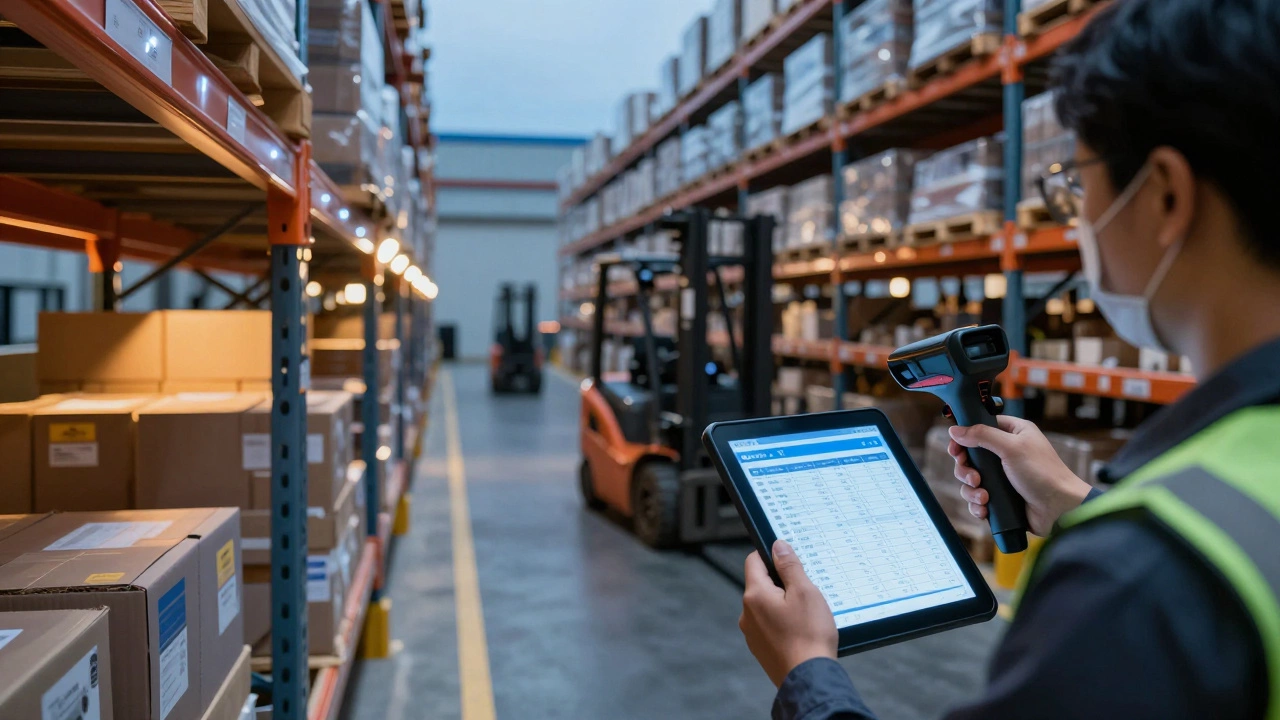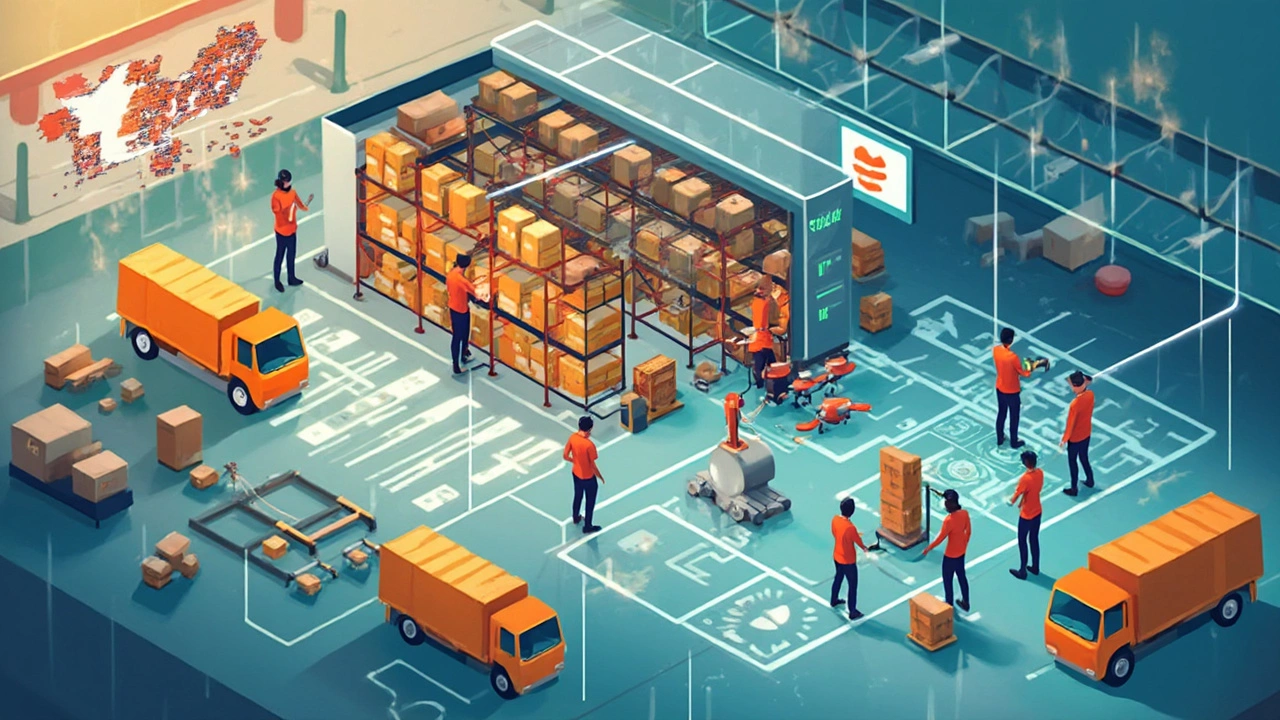Logistics Software: Your Shortcut to a Smarter Supply Chain
If you’re juggling inventory, trucks, and orders, you know how messy things can get. A good logistics software pulls all those moving parts into one clear view, so you spend less time chasing data and more time growing your business.
Imagine seeing stock levels, shipment routes, and driver performance on a single screen. That’s what modern logistics platforms do – they turn scattered spreadsheets into real‑time insights. The result? Faster order fulfillment, lower transportation costs, and happier customers.
Why Choose Logistics Software?
First off, automation saves you money. Manual entry always carries a risk of errors, which can lead to delayed shipments or overstocked warehouses. With software handling routine tasks, you cut down on mistakes and free up staff for higher‑value work.
Second, visibility improves decision‑making. When you can track every pallet from the moment it leaves the dock to the moment it arrives at the customer’s door, you can spot bottlenecks and adjust routes on the fly. That agility is priceless in a market where delivery speed matters.
Third, most logistics tools integrate with other systems you already use – like your e‑commerce platform, accounting software, or ERP. This eliminates duplicate data entry and ensures that sales, finance, and operations are all speaking the same language.
Top Features to Look For
Real‑time tracking: Live GPS data, status updates, and alerts let you monitor shipments and react instantly to delays.
Warehouse management: Features such as slotting, barcode scanning, and inventory forecasting keep your stock organized and reduce pick errors.
Transportation Management (TMS): Route optimization, carrier selection, and freight costing help you choose the cheapest and fastest way to move goods.
Analytics & reporting: Dashboards that show KPIs like on‑time delivery rate, cost per mile, and inventory turnover turn raw data into actionable insights.
Scalability: Whether you run a single warehouse or a network of distribution centers, the software should grow with you without a major overhaul.
Choosing the right solution starts with listing your pain points. Do you need better carrier rates? Focus on TMS features. Is inventory accuracy your biggest headache? Look for a robust WMS. Most vendors offer free demos, so take advantage of them to see the interface in action.
Once you’ve picked a system, plan a phased rollout. Start with one warehouse or a single route, train the team, and gather feedback. A smooth transition keeps disruption low and ensures users adopt the new tools quickly.
In short, logistics software isn’t just another tech expense – it’s a practical tool that cuts costs, speeds up deliveries, and gives you data you can trust. If you’re ready to move beyond spreadsheets and start making smarter supply‑chain decisions, now’s the time to explore your options.
What is WMS in logistics? A simple guide to warehouse management systems
A warehouse management system (WMS) is essential software for tracking, organizing, and shipping inventory efficiently. Learn how WMS works, why businesses need it, and what to look for when choosing one.
Read MoreWhat Is the Most Valuable Logistics Brand in 2025?
The most valuable logistics brand in 2025 isn't the one with the most trucks-it's the one with the best software. Discover how UPS, DHL, FedEx, and Maersk lead with AI, APIs, and blockchain.
Read MoreUnderstanding the 3 Types of Logistics: A Clear Guide
Learn the three core logistics types-transportation, warehouse, and distribution-and how they work together. Get clear definitions, real‑world examples, software tips, and a handy comparison table.
Read MoreSAP in Warehousing: Meaning, Role, and Real Benefits Explained
What does SAP stand for in warehousing? Find out what SAP means, how it works in warehouses, and why it's a game-changer for logistics teams worldwide.
Read MoreEssential Logistics Software: Tools That Power Modern Supply Chains
Explore essential logistics software types, real-world examples, and tips for choosing the right tools to boost efficiency and accuracy in supply chains.
Read MoreWho Uses Warehouse Management Systems? WMS Users Explained
Discover who actually uses a Warehouse Management System. From ecommerce giants to local suppliers, uncover the real faces and facts behind WMS adoption.
Read MoreSAP in Logistics: Making Complex Supply Chains Simple
SAP in logistics isn’t just a tool; it’s the backbone for companies wanting smooth, reliable supply chains. This article digs into how SAP keeps warehouses humming, trucks moving, and data under control, making headaches like missing parts or late shipments less common. You’ll get the details on how it works, why it matters, and practical tips if you’re looking to switch or upgrade. We’ll cover the basics, real examples, and a few tricks to get SAP working harder for your business. If you’ve ever wondered how big brands seem to keep things running (even when surprises hit), SAP probably plays a big part.
Read MoreLogistics Profitability: How Much Can You Really Make?
Wondering if logistics is actually profitable? This article dives into the real numbers, breaking down what impacts profit in logistics and how smart software choices make a difference. From hidden fees to automation wins, see what top performers are doing and why others struggle. Get simple facts, useful tips, and straightforward advice on boosting margins in this fast-moving industry. If you're weighing logistics investments, don't miss these insights.
Read MoreLogistics Software: How It Works and Why It Matters
This article breaks down how logistics software really works, from tracking shipments to syncing up inventory and automating tasks. Find out what goes on behind the scenes when you place an order, and why logistics software is a game changer for businesses. You'll get a peek at the latest features, tips on avoiding common headaches, and real-world examples of how companies are saving time and money. If you've ever wondered how your packages move so fast, you're about to get the inside scoop. Perfect for anyone curious about modern supply chains and tech-driven efficiency.
Read MoreWho Is the Biggest Logistics Company in the US? The Real Heavyweight Explained
Curious about which company dominates logistics in the US? This article breaks down the top player, how they got there, and why software is at the heart of their operations. Get the real numbers, see how technology gives them an edge, and pick up some tips for picking a logistics partner yourself. If you’re wondering whether size, speed, or brains matter most, you’ll get answers here. Simple facts, clear advice, and zero fluff.
Read MoreWhy is Amazon Closing So Many Warehouses? The Real Story Behind the Shift
Amazon is shutting down more warehouses than ever, and it’s making waves in the logistics world. This article breaks down the real reasons behind these closures, from changing tech in supply chains to shifts in shopping habits. You'll learn how logistics software is reshaping the warehouse game and what this means for workers and businesses. We’ll look at what Amazon’s moves say about the future of fast delivery and global e-commerce. Plus, you’ll pick up some useful tips on adapting to these changes whether you run a business or just shop online.
Read MoreEssential Warehouse Software for Smooth Operations
Discover the essential software tools that power today's warehouses. This article explores key solutions that streamline operations, from inventory management systems to workforce optimization tools. Learn how these technologies help warehouses keep track of stock, coordinate logistics, and improve efficiency. Find practical tips for choosing the right software for your needs and understand the latest trends in warehouse technology. Get up-to-date insights tailored for modern warehouse management.
Read More










